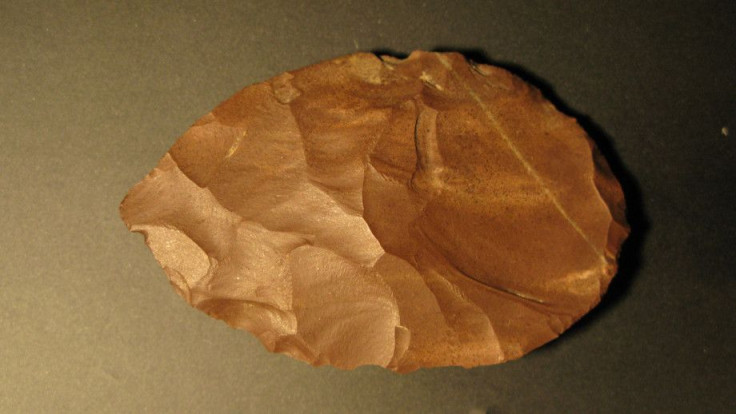Neanderthals, Homo Sapiens Likely Met Over 40,000 Years Ago In Modern-Day Czech Republic

Sometime just over 40,000 years ago, the last surviving cousins of the modern humans, Homo Neanderthals, likely met their Homo sapiens kin in the modern-day Moravia region of the Czech Republic, a new paper suggests. It is based on the excavation of 10 layers of sediment in a cave in the region that date back to between 28,000 and 50,000 years old.
The Pod Hradem Cave in the eastern Czech Republic was first excavated in 1956-1958, and again in 2011-2012. The advanced techniques used during the second excavation revealed portable art objects, never-before-seen in the region, as well as raw materials that suggest long-distance travel. The dig turned up over 20,000 objects that include animal bones, stone tools, and weapons, as well as an engraved bone bead — the oldest of its kind found in Central Europe.
“In the early layers the items we’ve found are locally made flakes, possibly used by small communities living and hunting in the vicinity to kill animals or prepare food, but around 40,000 years ago we start to see objects coming from long distances away. Dating from this same time we unearthed a bead made from mammal bone. This is the oldest portable art object of its type found anywhere in central Europe and provides evidence of social signaling, quite possibly used as a necklace to mark the identity of the wearer. So between these two periods, we’ve either seen a change in behavior and human movement or possibly even a change in species,” Duncan Wright, an archaeologist from Australian National University who was a co-author of the paper, said in a statement Wednesday.
Read: Pre-Humans Split From Apes In The Mediterranean, Not Africa
Modern humans, or Homo sapiens, are thought to have first arrived in Europe about 45,000 years ago. And the evidence from Pod Hradem suggests an increase in human mobility around the same time. Tools and artifacts recovered from the layer that is about 48,000 to 45,000 years old were made using the material available locally.
“We’ve found that somewhere between 40-48,000 years ago people became highly mobile. Instead of moving short distances near the cave where they lived, they were walking for hundreds of kilometers [miles] quite often. We know that because we found various artifacts where the raw material comes from 100-200 kilometers away. The artifacts were also made of different materials from different regions. Some from the North-West, some from the North, some from the East,” Ladislav Nejman, an archaeologist from the University of Sydney and lead author of the paper, said in the statement.
The presence of artifacts likely means that groups of people, Neanderthals and Homo sapiens, camped in the area from time to time. And “it's quite possible that the two different species of humans met in this area,” Wright said.
That remains to be confirmed, however, and to test that, samples have been sent for analysis. A new technique, called ancient sediment DNA analysis, will be used for the test. It examines DNA that has been preserved in the sediment and can determine species without the presence of bones.
Read: Oldest Human Remains Ever Found In Morocco
The thousands of years represented in the different layers of sediment also revealed information about how the climate changed in the region during that time.
“The climate changed quite often from warmer to colder, and vice versa, but at all times it was much colder than the interglacial period that we have lived in for the past 10,000 years,” Nejman said.
The paper, titled “Hominid visitation of the Moravian Karst during the Middle-Upper Paleolithic transition: New results from Pod Hradem Cave (Czech Republic),” appeared online in the Journal of Human Evolution.
© Copyright IBTimes 2024. All rights reserved.





















